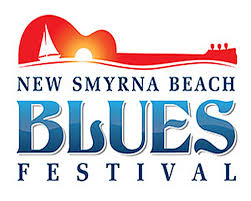Old Jail Museum In St. Augustine Florida

At the Old Jail Museum in St. Augustine, FL, you can explore history firsthand. Built in 1891 under the direction of Henry Flagler, the jail's picturesque exterior masked its strict, labor-intensive environment. You'll marvel at its Romanesque Revival and Gothic Revival architecture. Famous inmates like outlaw Charlie Powell (1892) and counterfeiter Eliza Johnson (1901) once paced its corridors. Daily life was harsh, with early wake-ups and sparse meals. Guided tours with costumed characters provide vivid re-enactments, using historical documents to tell the inmates' stories. Special exhibits showcase original artifacts, offering a thorough exploration into the evolution of incarceration practices. Discover more on your visit!
The Old Jail is located at Old Town, along with the Old Town Trolley main station, The Oldest Store Museum, The St. Augustine History Museum, and a gift shop. The Old Jail is open all year except on Christmas Day.
The museum opens at 9:00 a.m. daily, and closes at 4:30 p.m. They are open all year with the exception of Christmas Day. Tours last approximately 30 minutes.
The Old Jail is located at Old Town, with the Old Town Trolley main Station, the Oldest Store Museum, the St. Augustine History Museum, and a gift shop.
Key Takeaways
- Constructed in 1891, the Old Jail Museum is known for its Romanesque Revival and Gothic Revival architecture.
- Guided tours offer immersive historical narratives and interactive experiences with costumed characters.
- Famous inmates like Charlie Powell and John 'Red' Hamilton resided here, adding to the museum's intrigue.
- Special exhibits feature original artifacts and detailed displays chronicling the history of incarceration.
- Located in St. Augustine, the museum offers ample parking, a souvenir shop, and numerous photo opportunities.
History of the Old Jail
The Old Jail in St. Augustine, FL, was constructed in 1891 under the supervision of Henry Flagler, a prominent industrialist whose influence shaped much of the city's architectural landscape. Initially, the jail was built to blend seamlessly with the city's aesthetic, masking its true purpose. You'd find the early years of the Old Jail marked by a stark contrast between its picturesque exterior and the harsh realities within.
From its inception, the jail employed strict incarceration methods. Prisoners were subjected to labor-intensive work, often under grueling conditions. The cells were cramped and offered minimal comfort, reflecting the punitive mindset of the era. Early records reveal that inmates were expected to contribute to the local economy through tasks like road repair and maintenance.
Jail renovations over the years brought some changes. In the 1950s, efforts were made to improve living conditions slightly, though the essence of the jail's original purpose remained largely intact. Documented accounts from this period highlight attempts to modernize facilities, including better ventilation and sanitation. However, the underlying focus on punishment rather than rehabilitation persisted, a reflection of the era's prevailing attitudes towards incarceration.
Architectural Features
One of the most striking features of the Old Jail's architecture is its Romanesque Revival style, characterized by heavy stonework and rounded arches, designed to obscure its true function. Built in 1891 by the P.J. Pauley Jail Building and Manufacturing Company, it was meant to look more like a posh Victorian house than a place of confinement.
The Old Jail also incorporates elements of Gothic Revival, adding unique features like pointed arches and intricate ironwork details. The iron bars and gates display a mix of functionality and ornate design, which were unusual for jail architecture at the time.
As you explore the Old Jail, pay special attention to these architectural highlights:
- Front Facade: The imposing front with its Romanesque arches and stonework.
- Watchtower: A Gothic Revival watchtower that offers a panoramic view of the surroundings.
- Ironwork Details: Delicate yet strong iron bars on windows and cells, blending security with artistry.
- Hidden Passages: Secret corridors used for transporting inmates discreetly.
These elements not only add to the aesthetic appeal but also serve functional purposes, making the Old Jail a fascinating study in architectural ingenuity. The blend of styles and unique features make it a must-see for those yearning for history and architectural freedom.
Famous Inmates
Among the many notorious figures confined within the walls of the Old Jail, you'll find the infamous outlaw Charlie Powell, whose 1892 arrest made headlines across the nation. Powell's capture followed a string of bank robberies and train heists that terrorized the southeastern United States. His notoriety reached a peak when he was finally apprehended by a coalition of lawmen in a dramatic standoff in Jacksonville.
Next, there's the case of Eliza Johnson, imprisoned in 1901 for her involvement in a high-profile counterfeit operation. Primary sources from local newspapers reveal her intelligence and cunning, which allowed her to evade capture for years. Her arrest was a significant coup for law enforcement and highlighted the increasing sophistication of criminal activities at the turn of the century.
You'll also encounter tales of John "Red" Hamilton, an associate of John Dillinger, who briefly resided in the Old Jail in the early 1930s. His involvement in notorious crimes, including bank robberies and jailbreaks, made him a legend. According to prison records, Hamilton's time in St. Augustine was marked by frequent escape attempts, embodying the restless spirit of those who yearn for freedom even behind bars.
Daily Life in Jail
You'll find that the daily life of inmates at the Old Jail was strictly regimented, starting with a 5:30 AM wake-up call. Historical records show that prisoners were assigned various tasks such as cooking, cleaning, and maintaining the grounds. These tasks were essential not only for the jail's upkeep but also served as a form of discipline and rehabilitation.
Inmate Daily Routines
From dawn until dusk, the daily routines of inmates at the Old Jail in St. Augustine, FL were meticulously regimented, reflecting the strict discipline enforced within its walls. Each day began with a meager breakfast at 6 a.m., often consisting of bread and porridge. This was followed by a brief exercise routine in the yard, designed more to maintain basic health than to invigorate the spirit.
- Inmate Meals: Meals were sparse, with lunch and dinner offering little variety—usually beans, occasionally a bit of meat, and stale bread.
- Exercise Routines: Physical activity was mandated for short periods, preventing the inmates from becoming entirely sedentary.
- Inmate Recreation: Limited leisure activities allowed inmates to engage in minimal social interactions, often through organized games.
- Social Interactions: Conversations were brief and monitored, ensuring that prisoners didn't conspire or engage in prohibited discussions.
Prisoner Work Assignments
Prisoner work assignments at the Old Jail in St. Augustine, FL, were meticulously organized, with each inmate assigned specific tasks such as laundry, kitchen duties, or maintenance work to maintain the facility's operations. In the early morning, prisoners were divided into chain gangs, sent out to perform hard labor on public works like road construction and maintenance. These assignments were not just about punishment; they were also part of a broader strategy to instill discipline and a sense of purpose.
By mid-morning, some inmates shifted to vocational training workshops. According to primary sources from the era, these programs aimed to equip prisoners with skills they could use after release, giving them a chance at rehabilitation. Tasks included carpentry, blacksmithing, and other trades that were valuable in the outside world.
Afternoons were usually reserved for internal duties. Laundry work, kitchen chores, and maintaining the jail's upkeep were essential for daily operations and kept the environment functional. Although grueling, these assignments provided a structured routine. Ultimately, the system sought to balance hard labor with vocational training, hoping that such a regimen would aid in the prisoners' rehabilitation and eventual reintegration into society.
Guided Tours
During the guided tours at the Old Jail Museum in St. Augustine, FL, visitors are immersed in a historical narrative that vividly portrays the lives of inmates and the development of the criminal justice system from the late 19th to early 20th centuries. As you move through the museum, you'll experience the harsh reality of life behind bars and the chilling atmosphere of dark cells. These tours are designed to provide a detailed, chronological exploration of the facility's history, using primary sources to bring authenticity to the experience.
- Inmate Stories: Hear firsthand accounts from historical documents and letters that reveal the daily struggles and survival tactics of prisoners.
- Structural Evolution: Learn about the architectural changes made to the jail over time, reflecting shifts in penal philosophy and security measures.
- Punishments and Reforms: Discover how punishment methods evolved, including the progression from physical punishments to early rehabilitation efforts.
- Escape Attempts: Uncover daring escape stories that highlight inmates' relentless desire for freedom.
These guided tours are perfect for those who crave deeper insights into the past, shedding light on the grim reality of confinement and the relentless human spirit yearning for liberation.
Costumed Characters
When you visit the Old Jail Museum, you'll encounter costumed characters who bring history to life with unmatched enthusiasm. Adorned in authentic period attire, these actors meticulously recreate the era, using primary sources to guarantee accuracy. Their interactive approach allows you to experience the past firsthand, making your visit both educational and engaging.
Historical Roleplay Enthusiasm
Visitors to the Old Jail Museum in St. Augustine, FL often find themselves captivated by the historical roleplay enthusiasts who don period-specific costumes to bring the past vividly to life. These dedicated individuals provide an immersive recreation of history that's both educational fun and thrillingly authentic. Here's what you can expect:
- Roleplay Excitement: Actors play various characters from the jail's past, including guards and inmates, offering an engaging narrative that's hard to forget.
- Historical Accuracy: The museum has gone to great lengths to guarantee that every detail, from language to behavior, mirrors the late 19th and early 20th centuries.
- Interactive Tours: You'll walk through the jail as these costumed characters recount real stories, offering a firsthand glimpse into the past.
- Primary Source Material: All dialogues and reenactments are meticulously researched, drawing from letters, diaries, and official records of the time.
The roleplay excitement you'll experience at the Old Jail Museum is designed to be both entertaining and enlightening. This historical accuracy doesn't just educate; it transports you back in time, making you part of the story. Don't miss the chance to see history come alive in such a vivid and memorable way!
Authentic Period Attire
Stepping into the Old Jail Museum, you'll immediately notice the authenticity of the period attire worn by the costumed characters, meticulously designed to reflect the fashion of the late 19th and early 20th centuries. From the moment you arrive, the immersive experience begins with these historical reenactment experts clad in period clothing that includes everything from high-collared shirts to bowler hats and corseted dresses.
The attention to detail is evident, as these garments are not just costumes but accurate reproductions based on primary sources such as photographs and fashion plates from the era. You'll see the jailers in their uniforms, complete with brass buttons and leather belts, while the inmates wear striped prison garb that speaks to the harsh realities of the time. These characters move and speak as if they've stepped out of a different century, turning the museum into a living tableau of vintage fashion.
It's as if you've walked into one of those grand costume parties where each participant is dedicated to their role, bringing history alive with every swish of a dress or tip of a hat. This dedication to authentic period attire guarantees that your visit is both educational and deeply engaging.
Interactive Visitor Experiences
Engaging with costumed characters at the Old Jail Museum offers an unparalleled opportunity to interact directly with living history, as these reenactors not only dress the part but also embody the personalities and daily routines of their historical counterparts. From the moment you step into the museum, an immersive atmosphere surrounds you. Characters like the stern jailer or the resourceful cook provide hands-on activities and interactive exhibits that make history come alive.
Here's what to expect:
- Authentic Conversations: Engage in lively discussions with characters who stay in character, offering you captivating narratives about jail life.
- Daily Routines: Participate in reenacted daily tasks, from cooking in the jail kitchen to overseeing prisoner work details.
- Historical Insights: Gain firsthand knowledge through direct interaction with characters portraying both inmates and staff, making history tangible.
- Interactive Tours: Join guided tours led by these costumed characters, offering a detailed analysis of each room and its historical significance.
These experiences are meticulously crafted based on primary sources, ensuring historical accuracy. For those seeking freedom from the mundane, the Old Jail Museum's costumed characters provide a charming journey through time.
Special Exhibits
Among the fascinating special exhibits at the Old Jail Museum in St. Augustine, FL, you'll find carefully curated displays that chronicle the historical development of incarceration practices from the late 19th century to the early 20th century. Starting with unique artifacts, you'll encounter original shackles, uniforms, and even a sheriff's desk, all recounting stories of the past. These items are complemented by interactive displays, allowing you to feel the weight of the shackles or sit at the sheriff's desk, fostering a tangible connection to history.
As you progress through the exhibits, you'll discover educational programs designed to engage and inform. These programs often include hands-on activities, such as decoding Morse code messages or examining old jail ledgers, offering a comprehensive exploration into the operational aspects of the jail. Primary sources like letters from inmates and records from jailers provide authentic insights into the lives of those who lived within these walls.
The chronological order of the exhibits ensures a clear understanding of how incarceration evolved over time. This structure, combined with the rich array of artifacts and interactive elements, makes the Old Jail Museum a compelling destination for those eager to understand the past.
Visiting Information
When planning your visit to the Old Jail Museum in St. Augustine, FL, you'll find that the museum offers a range of practical amenities and detailed historical insights to enhance your experience. Start by considering the parking options available. The museum provides ample parking space, ensuring you won't have to stress about finding a spot. Once parked, you can check the tour schedules, which are frequent and designed to accommodate various time preferences.
As you enter, you'll immediately notice the well-preserved structure, guided by expert historians who use primary sources to bring the past to life. The tours offer a chronological journey through the jail's history, from its construction in 1891 to its closure in 1953.
To make the most of your visit:
- Parking Options: Secure a parking spot early, especially during peak times.
- Tour Schedules: Plan your visit around the guided tour times for a detailed experience.
- Souvenir Shop: Don't forget to visit the souvenir shop for unique keepsakes.
- Photo Opportunities: Bring a camera to capture the historic architecture and intriguing exhibits.
Enhance your freedom of exploration by planning ahead, ensuring a memorable trip to this historical gem.
Nearby Attractions
Just a short walk from the Old Jail Museum, you'll find the historic St. George Street, teeming with colonial architecture and rich historical narratives. This pedestrian-only street invites you to explore its myriad shops and local restaurants. Start your journey at the north end near the City Gates, an ideal spot for some sightseeing and to snap a few photos of these iconic structures.
As you meander southward, you'll encounter a variety of local restaurants offering everything from fresh seafood to classic American fare. For those who relish the freedom of an open-air market, the street is lined with boutique shops, perfect for finding unique gifts and local crafts.
Once you've satisfied your shopping instincts, why not engage in some outdoor activities? Just a few blocks away, the Castillo de San Marcos beckons with tales of old battles and a spectacular view of the Matanzas Bay. If you're a fan of nature, take a leisurely stroll through the nearby Fountain of Youth Archaeological Park, where the lush greenery and historical exhibits provide a rejuvenating escape.
Vacation Rental Management Companies in St Augustine Area Florida

The Ocean Gallery Properties offers professional property management for the Ocean Gallery Resort. We manage and rent the Ocean Gallery's oceanfront.. learn more

Suncastle Properties of Ponte Vedra..
Suncastle Properties is your one-stop for Residential Property Management and Home Rentals. Specializing in Short-term and Vacation Rentals, Long-term.. learn more
Frequently Asked Questions
Is the Old Jail Museum Wheelchair Accessible?
You're wondering if the museum is wheelchair accessible. First, know they've prioritized accessibility options. Despite the building's historical significance, which can sometimes complicate modifications, they've made efforts to guarantee everyone can experience it. Primary sources indicate ramps and elevators are installed where possible, though some areas might still be tricky due to the structure's age. Overall, they aim to balance accessibility with preserving history.
Are Pets Allowed Inside the Old Jail Museum?
You're probably curious about the pet restrictions when visiting. According to the animal policies, pets aren't allowed inside the museum. This rule guarantees the preservation of exhibits and comfort for all guests. First, you'll encounter these restrictions at the entrance. Then, staff will inform you of alternative options, like pet-friendly areas outside. Following these guidelines will help you enjoy your visit while respecting the museum's regulations.
Can You Take Photos Inside the Old Jail Museum?
Yes, you can take photos inside. The photography policy allows it, but flash is prohibited to protect artifacts. This history-rich site values preservation efforts, ensuring the jail's integrity for future visitors. Initially, you'll be briefed on rules to enhance your visitor experience. Throughout the tour, guides highlight key spots for memorable photos. Primary sources indicate that these measures balance freedom with preservation, creating an engaging experience for all.
Is There a Gift Shop at the Old Jail Museum?
Yes, there's a gift shop where you can find a great souvenir selection. After immersing yourself in the historical artifacts during the tour experience, you'll appreciate the variety of mementos available. The shop is strategically placed at the end of the tour, making it convenient for visitors. Ticket prices for the tour are reasonable, ensuring you can enjoy both the experience and the gift shop without breaking the bank.
Are There Restrooms Available for Visitors at the Old Jail Museum?
When you visit the museum, you'll want to know about restroom facilities available. First, check the layout; most museums provide accessibility options for all visitors. Reports from primary sources confirm restrooms are strategically placed for convenience. Before exploring, locate these facilities to plan your visit effectively. Securing these essentials means you can enjoy your freedom while delving into history without worry about basic needs.
Vacation Rentals in St Augustine Area Florida



Additional St Augustine Area Articles
Cathedral Basilica of St. Augustine Florida
St Augustine Area Florida
Travel Guide to St Augustine Beach Florida
St Augustine Beach Florida
Things To Do Jacksonville Area Florida
Jacksonville Area Florida
Travel Guide










